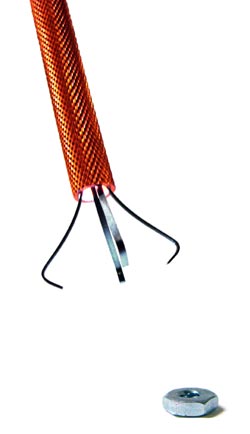 Sometimes no matter what precautions you take, something still gets dropped in a hard to retrieve spot. It’s important to have retrieval equipment on site and ready to go just in case something is lost. Keeping tools on site minimizes costly downtime and allows workers to quickly get back to the task at hand. The following retrieval tools are recommended as backup on foreign material jobs.
Sometimes no matter what precautions you take, something still gets dropped in a hard to retrieve spot. It’s important to have retrieval equipment on site and ready to go just in case something is lost. Keeping tools on site minimizes costly downtime and allows workers to quickly get back to the task at hand. The following retrieval tools are recommended as backup on foreign material jobs.
Grabbers
Anything that extends a person’s reach, either into a hard to reach area, or further away is considered a grabber. Grabbers should be selected according to the work you are doing and the equipment you are using.
Magnets
Pick up magnets are a type of grabber that uses a magnet to retrieve small metal material. Its a good idea to have a few of these on hand just in case. One unique magnetic device is a set of magnetic fingertip gloves.
Flashlights
Flashlights, obviously, make it easier to find items in low light situations. One of the best flashlights for retrieval is a magnetic tipped telescoping flashlight with a flexible head. These lights have a magnet on both ends and are great for grabbing metal articles from hard to reach places. For non-metal retrieval a lighted head claw tool can handle the job wonderfully.
Inspection Mirrors
For FME the best inspection mirrors are made without glass components. The glass on a standard mirror can shatter, adding to the current problem. Stainless steel and acrylic alternatives reduce the risk of the mirror becoming another device in need of retrieval.
Borescopes
Cameras on the ends of cables are great for locating lost items and inspecting equipment. Sometimes the camera heads on cheaper models can be severed if not withdrawn in the correct manner, so in foreign material exclusion work, be sure to use a model of borescope with a strong enough head.


 Use our lanyard selection form and we'll help you get the right lanyards for the job.
Use our lanyard selection form and we'll help you get the right lanyards for the job.